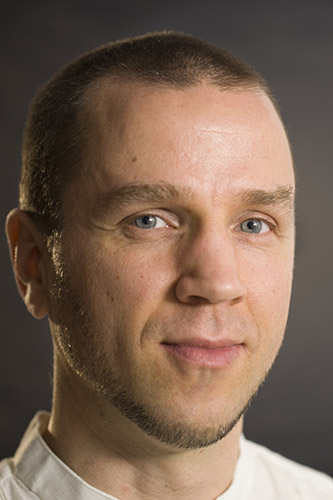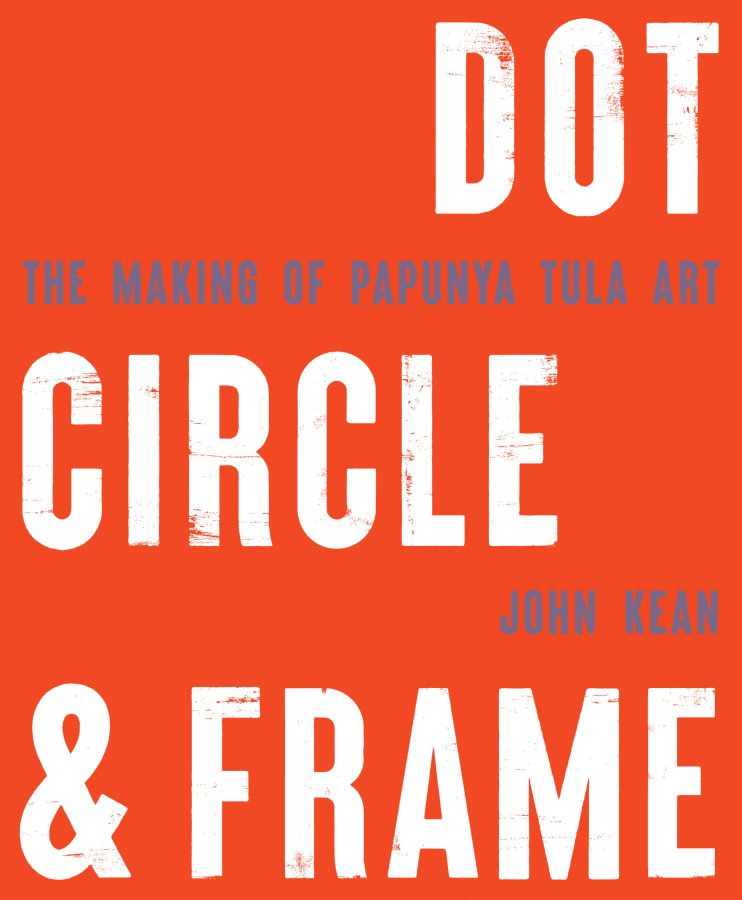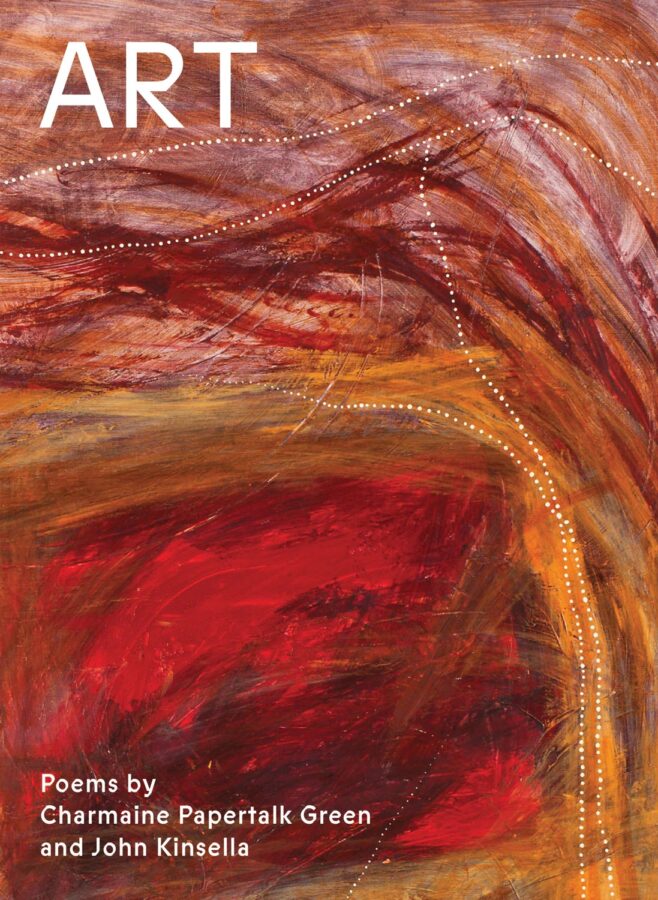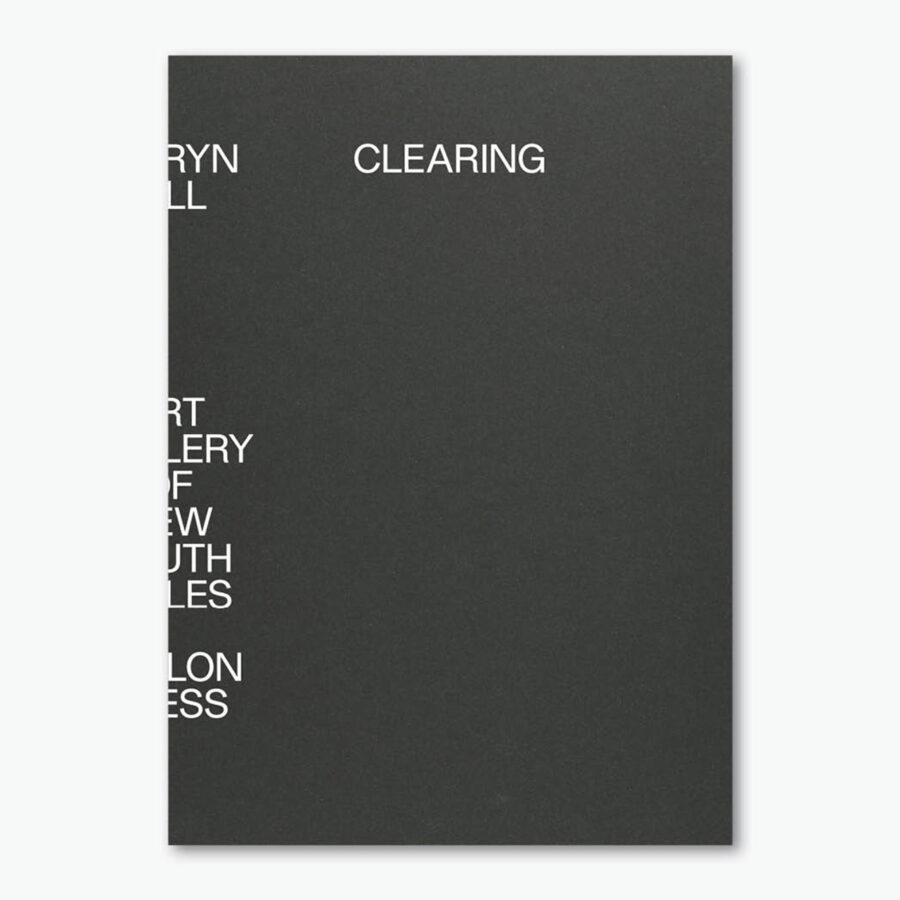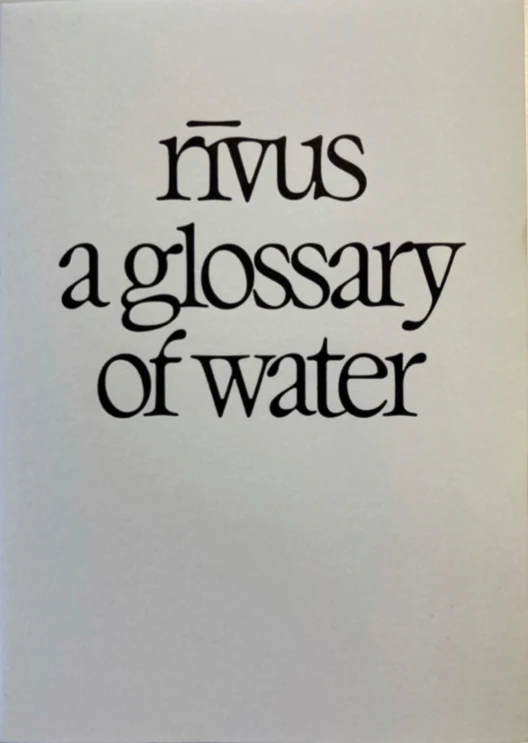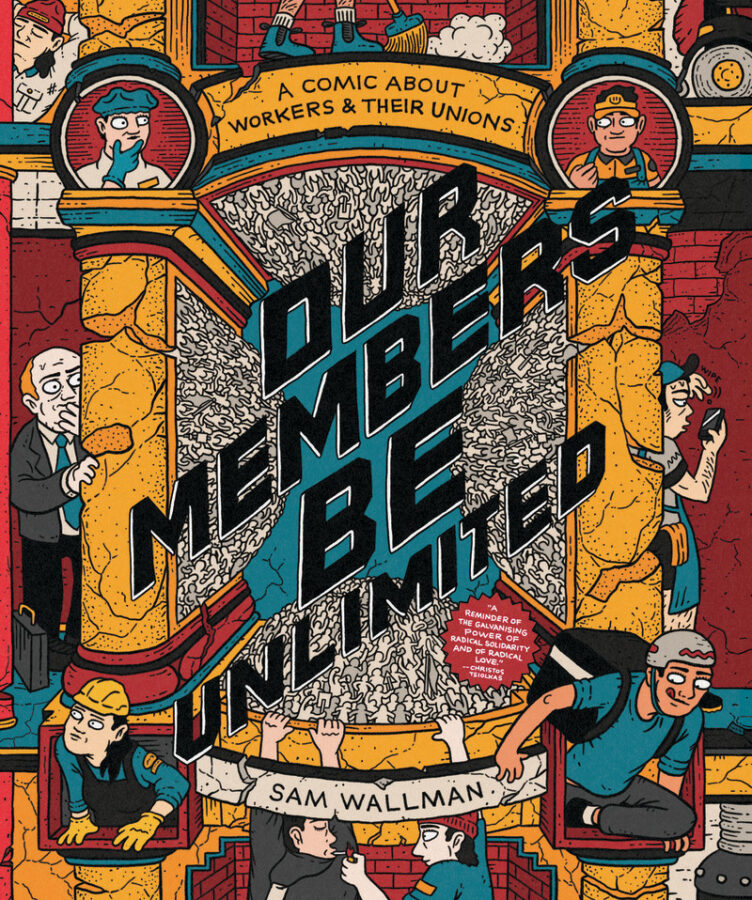A lot of people come to art and they look at it, and this is one of the problems in contemporary art, and so they don’t actually enter the realm that the artist was involved in.
⎯ James Turrell
Since the 1960s, James Turrell has been working with light and space to produce effects that are by turns beguiling, disorienting, hallucinatory, calming, meditative and subtly defamiliarising. A major retrospective of his work was held at the Los Angeles County Museum of Art from May 2013 to April 2014 and the catalogue for that show, James Turrell: A Retrospective (2013), tells us that it will be coming to the National Gallery of Australia in December 2014. This is a major coup for the NGA and follows from the gallery’s commissioning of the Turrell work, Within without (2010).
James Turrell: A Retrospective documents almost 50 years, during which Turrell has produced a body of work unrivalled for its depth of engagement with light and space as materials that have the potential to place the viewer in a profoundly immersive art experience. His earlier work includes single light projections that create the illusion of a three dimensional form. These often make use of the corners of spaces. More recently, he has developed Ganzfeld spaces, which immerse the viewer in a carefully controlled field of coloured light and use inclined walls and coved corners at the floor and ceiling to remove the reference points we rely on to perceive depth and dimensions. These techniques are representative of a range of approaches Turrell has used to transform the interiors of art galleries and institutions.
There is another body of work that runs in parallel to Turrell’s transformation of interior spaces. These are works that involve the construction of spaces outside the gallery walls. Within without at the NGA is one such construction. It is part of a series of works called Skyspaces that Turrell started producing in the 1970s. There are now 75 Skyspaces in various parts of the world. These works feature a ceiling with a circular, oval, square or rectangular aperture that is open to the elements and frames a section of sky. These works relate to Turrell’s magnum opus, Roden Crater: an extinct volcano he purchased in 1977, in which he has been building a series of Skyspaces and naked-eye observatories, each of which functions as a ‘calendar for the celestial movements and events that are at the heart of the varied spaces of the Roden Crater project’. Construction began on the earthworks and spaces of the Crater in 1979 and the scale of the enterprise means that we still don’t know when it might be opened to visitors. There are few contemporary artists, if any, who are attempting anything on the scale of Turrell’s work with the Roden Crater. For this reason alone, there is a sense of awe and reverence around his work.
While not on the scale of Roden Crater, Within without is a significant work. Part of this significance is the way it relates to NGA’s role as a collecting institution. The NGA website tells us that ‘works in the Gallery are part of Australia’s national collection. They belong to the people of Australia and are preserved and presented for their enjoyment and education.’ The NGA is our visual art flagship sailing the waters of international art commerce and collecting works that then belong to us – but what does that actually mean? In practical terms, they belong to us in the same way that the David Walsh’s private collection at MONA belongs to the Tasmanian people – that is, we get to see them for free. With Turrell’s Within without, however, the NGA has commissioned a work with the potential to generate a more genuine and profound sense of ownership. I am thinking here both of the sense of ownership that comes from the participatory experience of the work, and the sense that the spaces of Within without are a kind physical and social commons. This is what you get with Turrell: not an object for the detached viewer to contemplate, but an invitation to engage in a collective, creative experience. In Turrell’s own words, you are invited to ‘enter the realm that the artist was involved in’.
In this sense, Turrell’s approach to making art can be seen as a continuation of the work of Mark Rothko, who said of his paintings:
I paint very large pictures. I realize that historically the function of painting large pictures is painting something very grandiose and pompous. The reason I paint them, however … is precisely because I want to be very intimate and human. To paint a small picture is to place yourself outside your experience. However you paint the larger picture, you are in it.
This was clearly part of the reasoning behind the creation of the Rothko Chapel, an obvious if somewhat isolated antecedent for Turrell’s many and varied skyspaces. While it has been dwarfed by the scale and number of Turrell’s projects, the Rothko Chapel (along with installations of his paintings, such as the one at the Tate Modern in London) still provides us with the opportunity to enter into the realm that Rothko was involved with in the final years of his life, a realm that was a source of inspiration for Turrell.
*
The Turrell dictum that we should enter into the realm of the artist is reinforced by the fact that physically entering the space is a significant part of many of his works. In the case of Within without, we enter by going down a ramp that is flanked on both sides by a pond-like water feature that sits at ground level. This takes us into a four-sided pyramid with the top lopped off: an intermediary space that offers some semblance of interiority but which is still largely open to the elements. From this first entrance, we see the back of a basalt dome that seems to float in another ground level water feature. From there, one of two ramps takes us up and around the walls of the pyramid to the entrance of the dome space. Both outside the installation and inside the pyramid, the sound of water spilling over the ponds into the narrow channels that line the ramps marks a sonic transition from the outside of traffic noise and energetic school groups to the contemplative inner space of the dome. That you go below ground level to enter the pyramid before coming up again to find the entrance to the dome reinforces the sense that you are entering a different realm.
So what is the realm that James Turrell has been involved in and how is it manifest in this work? In attempting to answer this question, the title is a good starting point. Thinking about how the words Within without relate to our experience of Turrell’s installation opens up some of the work’s many dimensions. Firstly and most obviously, the title alerts us to the fact that the work is a spatial play between inside and outside. As we go down the ramp to enter the outer pyramid, we feel as though the slope is taking us into an underground interior and yet we emerge into a space that offers only the most minimal protection from the outside. Minimal yes, but enterprising viewers in search of some shelter from inclement weather might stand under the roof of the entrance, or even squeeze into one of the three other corners of the pyramid, where, depending on the prevailing winds, they might find that the inwardly sloping walls offer them a dry corner from which to view the dome.
While the pyramid is more outside than inside, that relationship is inverted when we enter the dome. The two relatively small openings to the dome space (the entrance and the perfectly circular aperture in the ceiling) give the space a much greater sense of enclosure than the pyramid space, partly because of the fact that dome sits in the already partially enclosed space of the pyramid.
On a cool day in Canberra an attentive viewer might notice that the air in the dome is slightly warmer than it is outside. This is a little odd, given the aperture in the ceiling and the fact that there is no door to keep outside air from entering the space. The source of that warmth quickly becomes apparent when one sits on the concrete pew that circles the interior of the dome and realises that it is heated. So while we sit and look up and out through the aperture in the ceiling, feeling the air flow in through both aperture and entrance, our sense of the outside is muted by fact that the seat is providing us with the warmth that we most readily associate with interior spaces.
This unexpected warmth can be easily confused with a more common warm-seat-scenario. Indeed, the sense that someone might have just vacated the spot where you chose to sit down adds another dimension to the play between inside and outside as we imagine that we might be part of a process of sharing our inner warmth with the outside of another individual’s body. This evocation of the intimacy of sharing warmth with strangers is well placed in Turrell’s installation. In fact, the configuration of the inner space of the dome invites us to enter into a rather intimate collective experience, as we sit in a circle and in so doing join a congregation that includes the sky, framed as it is by the perfectly circular aperture.
Having spent some time with this work, it’s clear to me that not everyone who enters the dome does so with a mind to participate in this sort of congregation. A significant proportion of people who come in, look up for a moment, then leave without ever sitting down. Building this sort of installation does not solve the problem of viewers who look at art any more than Rothko’s large paintings may have. But I would argue that it is not just gallery going habits that stop some people from sitting down and engaging with Turrell’s work at length. When you sit on the circular pew and lean your head back your hands are drawn down onto the warm seat beside you. As you look up and out at the sky, your heart and neck are exposed and you find yourself in a vulnerable position. This is very different to the mastery of looking that we might experience with art objects. With such objects, we have at least the illusion of deciding for how long, at what angle and at what distance we might look at a work – an illusion that the large galleries in an institution like the NGA encourages.
In Within without, you are being directed toward a specific viewing angle and being asked to submit to an experience that has the potential to alter your perception of time, space and light. To remain standing is to maintain the mastery of your viewing and to turn Turrell’s work into a kind of art object. But if you choose to sit you will be rewarded, as you realise that Within without gives you the opportunity not simply to be subjected to the work but to participate in creating a singular experience of space, light, sound and touch (in connection with the elements), and to play with the boundaries between inside and outside. In fact, we might think of Within without as a kind of instrument of perception that allows you to play across its many modes.
If you talk to the people around you in Turrell’s dome, you will notice that the space has some acoustic properties that are themselves an invitation to play. Lower frequencies resonate particularly well. Like certain cathedral spaces, the dome seems an invitation to sing or hum in a way that expands your consciousness of the space by filling it with the vibrations of your voice. Vocal play can quickly lead you to an exploration of the space’s precise resonant frequency (the frequency of sound waves that most efficiently bounce around the space). When you hit the resonant frequency, the sound is amplified by the space and the reverberation has greater sustain. Hit the right note and the dome itself sings, like a cleanly struck tuning fork. If you continue to sing or speak as you move into the very centre of the dome you find that your voice becomes oddly amplified and disembodied, suddenly louder outside of you, as if it is coming from the walls. This sonic out-of-body experience is facilitated by the dome’s acoustic focal point, at which sound waves are focussed in much the same way that sunlight can be focussed by a parabolic mirror. As you stand in the focal point, you also experience a stream of air that flows downward from the aperture directly above you and which seems to be precisely channelled to fall on the centre of the space.
When you sit passively on the warm pew, your perception can drift towards an appreciation of interiority; but when you stand in the centre of the dome, your experience tips momentarily back toward an awareness of the outside. The flow of air, the sound of your voice coming in: these things are invitations to extend your consciousness into the dome space and beyond to the sky and the elements outside.
If you take seriously the idea of play in Turrell’s Within without, there is one other thing that you might want to try as you stand in the centre of the dome. If you spin in circles as you hum or sing a continuous tone, the sound waves will resonate in such a way as to make it seem as if your voice shoots around the dome in the opposite direction to which you are spinning. It is another curiously disembodied experience of voice that shifts its spatial presence and your spatial awareness.
It is also worth paying attention to what happens acoustically as you step into the centre of the dome. If you stand two steps from the centre, you will notice that the sound of the water feature outside is quite loud. Step into the centre and the sound drops away dramatically. The effect is like putting your head under water while swimming near a waterfall. You will also notice, in the centre of the dome, that the voices of those sitting on the pew drop in volume. By placing yourself at the acoustic focal point, you can reduce the volume of all sounds except those that are reflected back to you from a narrow region of the dome. It is a region of relative silence that allows you to connect with the outside of the aperture immediately above, with a kind of muffled sonic interiority, and with your own exteriorised voice.
*
Having visited Within without a number of times, I have noticed that alongside those who view the work as a kind of art object and those who are drawn into an art experience, there are a number of people who come to the work knowingly, perhaps viewing it as a kind of secular temple, a restorative place of contemplation. That locals use Within without as a place of refuge and meditation shows us that the status of Turrell’s Skyspaces as art is only one aspect of their social function. If meaning is use then the meaning of the Skyspaces goes well beyond the context of visual art: it extends to the way that these spaces weave themselves into the social fabric of the communities in which they exist. They can have this broader social function, in part, because they sit outside enclosed gallery spaces, but also because they are an open invitation to contemplation with no religious or ideological agenda.
The social function of the Skyspaces becomes clearer when we consider that they have also been commissioned for private residences. In that context, the Skyspace ceases to function as a commons. Instead, its exclusivity puts it more in the realm of luxury architectural commodity. The social dimensions of the Skyspace are therefore enhanced when this sort of work is held in a public collection, not only in relation to the obvious point that the work becomes accessible, but also because sharing the space with all comers provides a sense of the many and varied ways that viewers engage with Turrell’s spaces and respond to the experiences they provoke.
Spend any amount of time in Turrell’s Within without and you will see that a common response is to take a photograph. This response stems, in part, from the fact that Turrell is a kind of director, or director of photography, with no camera. He illuminates and frames and even directs you to engage with the environment in specific ways – looking at the work from specific angles, singing in specific tones. But there is always space for us to introduce our own variations through our movements and actions, and there is a corresponding impulse to document some of these variations photographically. While cameras do not play any material role in Within without, they are a significant way that people engage with the work. The desire to create something from the interaction, to make a photographic object and share an experience that resists the process of objectification, is an indication of a desire to bridge the gap between the inner experience of the work and the outside realm of social connections.
Since Turrell’s Skyspaces are used in ways that go beyond the kinds of engagement that we generally have with art, it is entirely appropriate that we reflect on their social function outside and beyond the discourse of contemporary art. But while we can experience the dome as a kind of secular temple with a social function for most of the day, at dawn and dusk we are brought back to what is quite clearly an art experience. As the sun sets and the light outside starts to change, parts of the inner walls of the dome start to glow a gentle and almost imperceptible orange. Depending on the atmospheric conditions, it can be hard to work out if the light is coming from inside or outside the dome. The orange glow gradually increases in intensity. It is similar to the way that the setting sun can turn large areas of cloud into giant reflectors that wrap a soft orange light around things, a light that brings ground and sky into a common colour space, and for that reason it seems to lift everything upwards. In both cases, we are drawn in to a kind of communion with the sky, but inside Turrell’s dome we are also conscious of the fact that our communion is mediated.
And herein lies a quandary for the Romantic in us all, because while we experience a mediated dusk in Within without, its mediated quality in no way diminishes its impact. In fact, the media that lies between us and the sky – the light bouncing off the walls of the dome – is the perceptual apparatus that transforms and intensifies the outside. This aspect of the work comes to the fore as the light reflecting off the walls of the dome gradually shifts through a series of colours that change the way we perceive the colour of the sky, which is itself changing as dusk turns to night. For example, purple light inside the dome creates a compensatory effect in the eye that turns the sky a striking shade of green.
Here Turrell plays with the capacity of our visual system to maintain a relatively consistent perception of surface colour when the colour of light changes. In photographic terms, we can think of this as the ‘white balance’ of the eye. This ‘white balance’ works well for a range of pre-electrical light sources, from the orange of candlelight or late afternoon to full sunlight, which contains a large proportion of light at the blue end of the spectrum. But when we encounter the variety and shifts in colour that we find in Turrell’s work, our natural white balance is thrown out and we experience a range of compensatory effects, such as the green sky.
As darkness descends (or ascends, the aperture certainly alters our sense of direction and proximity), the coloured light on the walls of the dome gets darker and a little pallid. The balance in light levels between the interior of the dome and the sky outside is maintained and the iris gradually adjusts to the lower light levels. This prepares the viewer for the final phase of the dusk cycle. Our dilated pupils, accustomed to the dim light, gradually close as bright yellow-orange light bounces off the walls of the dome. The sky, seen through the aperture darkens dramatically and becomes a kind of black-hole sun – or perhaps the aperture is a pupil and we are inside a giant eye, an eye whose perception of the outside is shaped as much by what is going on inside it as by the play of light in the atmosphere. Indeed, if you step outside at this point you will see that the sky is still holding the light of dusk and that it is only the relative light levels outside and inside the dome that make the sky appear dark when seen through the aperture. It is a false night, created by the use of bright light to close your pupils, that allows you to see the aperture as a pupil.
*
Turrell’s work reminds us that visual art can focus, channel and change perception in ways that intensify our appreciation of our surroundings. In this way, many of his works can be thought of as technologies of perception. But while technologies, such as the telescope, allow us to see more, Turrell is concerned with helping us to see differently. To echo the artist and many critics, he helps us to see our own seeing, and in so doing become aware of the physiology of sight.
Art institutions assume that most viewers come to look at art rather than really enter into it. This continues to be the default mode of engagement. The NGA collection is largely made up of two- and three-dimensional art objects that presuppose a kind of idealised individual viewer and are compromised when a group of people try to view the work together. It is not surprising then that the prospect of a collective experience of art is a little off-putting to gallery goers whose idea of what art should be is shaped by the majority of the NGA collection and its crowded blockbuster shows. This is not to dismiss or disparage those shows. They are obviously important to the functioning of the institution, and it was one of those blockbuster shows that paid for the Turrell work: the NGA website tells us that Within without was ‘purchased with the support of visitors to the exhibition Masterpieces from Paris 2010’.
But the habits of the gallery going public mean that the challenge for Turrell (and other artists of his ilk), whose aim is to turn looking at into a more open-ended and profound experiencing, remains undiminished. The rigour of Turrell’s strategies makes him one of the most important artists working today. I would argue that this also makes Turrell’s Within without the most significant and praiseworthy international art purchase the NGA has made to date. It is exactly the sort of contemporary art the NGA should be collecting: work that smaller institutions with less space and resources could not commission; work that engages viewers in the process of creating their experience of the art; work that alters our perception; work that can foster a genuine sense of collective ownership; work that challenges viewers to move beyond their habitual ways of looking at art.
Important political implications emerge from the experiences Turrell’s work facilitates. His work reminds us of the importance of contextual cues (like those provided by the colour of the ambient light) for sensory perception. By extension, we might reflect on the importance of context and framing in how we arrive at our opinions about our social and cultural surroundings. Olafur Eliasson, an artist who has clearly been influenced by Turrell, goes some way towards articulating the political implications of works that reveal the functioning of our senses:
I did two pieces (Your blue after image exposed and Your orange afterimage exposed, both 2000), where I projected light on a wall, and the light gradually got stronger and stronger, until after ten or twelve seconds of looking at it, the light would disappear. The after-image, an imprint of light on the wall, would be stamped on your retina. What happens then is that you actually project a reversed image with your eye, a complementary image, and for a moment you’ve been turned into a projector … The reason I think it’s important to exercise this double-perspective phenomenon is that our ability to see ourselves seeing – or to see ourselves in the third person, or actually step out of ourselves and see the whole set-up with the artefact, the subject and the object – that particular quality also gives us the ability to criticize ourselves. I think this is the final aim: giving the subject a critical position, the ability to criticize one’s own position in this perspective.
There is undoubtedly a critical position for the ‘subject’ in Within without, but it is a little different from the critical position that we might experience in Eliasson’s work. While the play of light and colour that turns the sky green in Turrell’s work is related to Eliasson’s after images, Turrell has also created a space that provides the means to reflect on the relationship of the individual to the collective. It is a space where our sense of interiority is always shaped and modulated by the outside and where we are made fully aware of our role in creating and internalising what we perceive as being exterior to us. In this sense, Within without becomes a kind of spatial model for empathy and communion; a critical position in relation to both the pull of individualism and the marginalisation of ritual and collective experience.
There is a more general politics of engagement that we can read into Turrell’s art – a politics that is heightened in the case of Within without by the fact that it is part of our national collection and is located in Canberra, a basalt-brick’s throw from Parliament House. Its position so close to the seat of government inspires that part of me prone to idealistic reverie. I start imagining what Parliament House would be like if Turrell had been consulted by the architects. In my reverie, I imagine the politicians and public in the galleries all pausing from the legislative debates to look up and out of a skyspace above the House of Representatives. I imagine the ceiling sliding back to produce a rectangular opening on the sky (as it does in the Quaker meeting house designed by Turrell). I imagine the air of a cool and clear Canberra evening flowing in and politicians and public alike watching the roof of the Parliament shift through a rainbow of colours, with each one changing their perception of the colour of the sky, which itself changes gradually, until night settles and the stars come out. I imagine that this intensely participatory collective experience might change the thinking of those parliamentarians who seem convinced that there is no society. As my reverie subsides I think that, if we let it, art can and does change the world.
Works Cited
Michael Goven and Christine Y. Kim, James Turrell: A Retrospective (Prestel, 2013).
Madeleine Grynsztejn et al., Olafur Eliasson (Phaidon, 2002).
James Turrell, James Turrell: A Retrospective (exhibition), (Los Angeles County Museum of Art, 2013)
James Turrell, artist’s website.
James Turrell, Within Without, National Gallery of Australia website.
